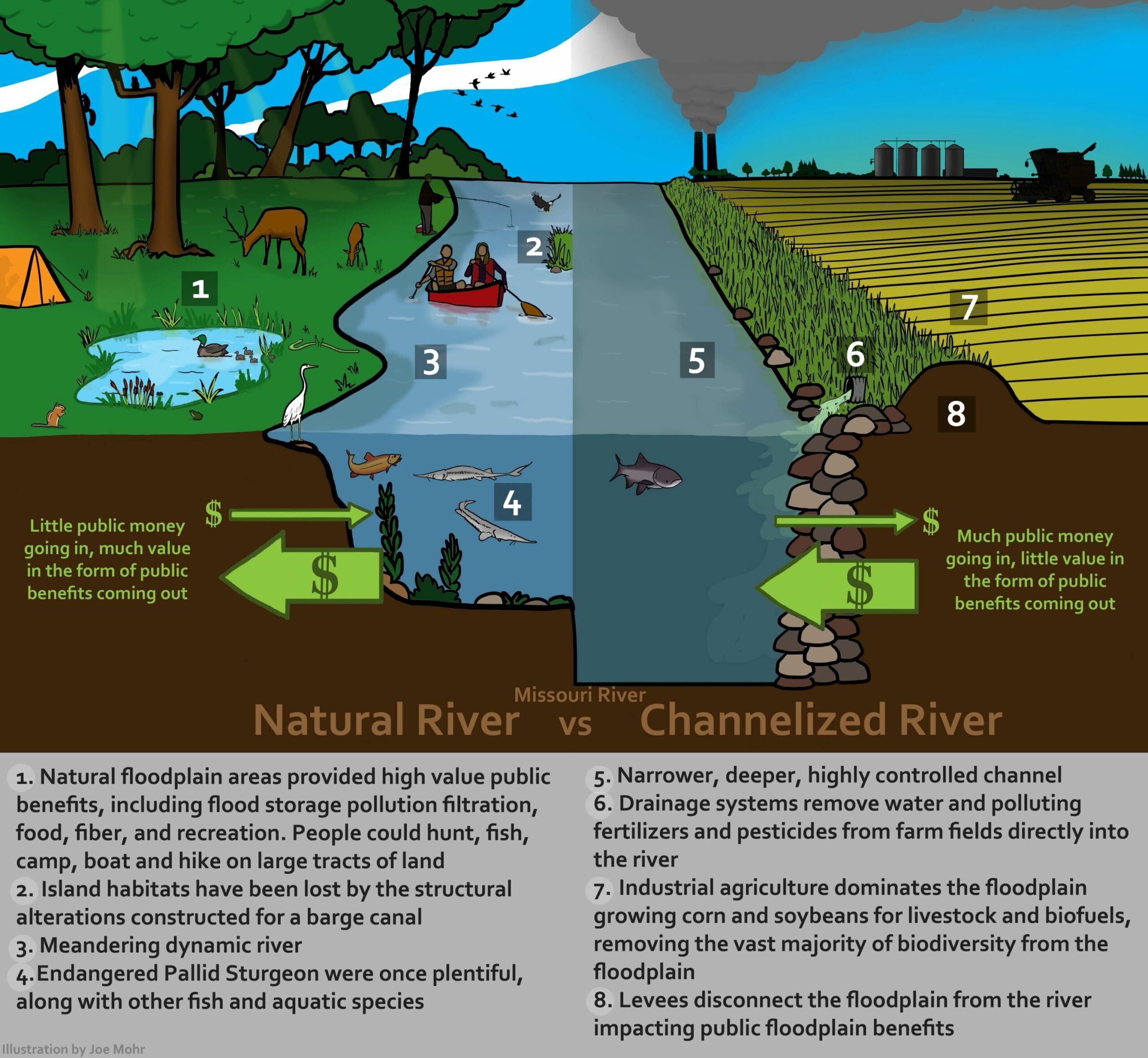
State of Our Streams
What is the state of our streams?
Major urban areas claim the shoreline of the Mississippi River, such as St. Louis, MO; Memphis, TN; and New Orleans, LA. Among these big three, two obtain their drinking water from the river.
Memphis is the only large urban area along the river that obtains its drinking water solely from groundwater. Mississippi River water must be treated because rivers are the point source discharge for many cities’ waste (sewer) and are receivers of non-point source discharge from runoff such as from agricultural fields and urban environments.

A study conducted by the U.S. Geological Survey in 1992-1994 found traces of heavy metals and other contaminants in the Mississippi River. Often these contaminants can be traced upstream into tributaries, and downstream into the Gulf of Mexico where contaminants and excess of nutrients create a “dead zone” for fish and shrimp.
An interesting feature in the Mississippi River is at Hickman, KY, where the river has formed a nick-point at a hard clay formation. The power of the river at this location has formed a plunge pool, eroding out a hole over 100 ft deep and can cause the river to run backwards in places. If the river eats through the hard clay here, the nick-point will slowly move upstream possibly threatening the lock and dams on the upper Mississippi River section.
Like the Mississippi River, much effort by engineers to tame flooding along tributaries resulted in channelized streams.
Channelization
What is it?
Channelization is the altering of a natural river’s sinuous shape into straighter stretches to expedite storm runoff away from the area or for navigation purposes. Channelization has detrimental effects to a stream and its ecosystem.
What are the effects?
Channelized rivers eventually deepen and widen which causes the river to disconnect from its floodplain. Once disconnected, ecosystems become broken and fragmented.
What is head-cutting?
Also, a phenomenon called head-cutting forms where this unnatural reshaping of the stream literally eats its way upstream causing damage to the stream system and man-made infrastructure (like the nick-point at Hickman, KY). In the southeast United States, West Tennessee’s Hatchie River is the only river that retains its natural sinuosity.
